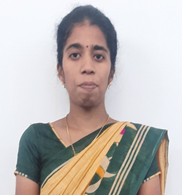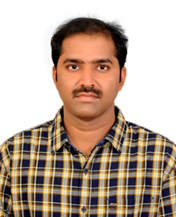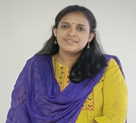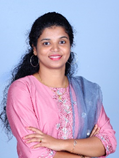NAAC
Home / NAAC
1. Curricular Aspects
1.1.1: The Institution ensures effective curriculum delivery through a well planned and documented process
1.1.2: The institution adheres to the academic calendar including for the conduct of CIE
1.1.3: Teachers of the Institution participate in the following activities related to curriculum development and assessment of the affiliating University and/are represented on the following academic bodies during the last five years
1.2.1: Percentage of Programmes in which Choice Based Credit System (CBCS)/ elective course system has been implemented
1.2.2: Number of Add/Certificate programs offered during the last five years
1.2.3: Average percentage of students enrolled in Certificate/ Add-on programs as against the total number of students during the last five years
1.3.1: Institution integrates cross-cutting issues relevant to Professional Ethics, Gender, Human Values, Environment and Sustainability into the Curriculum
1.3.2: Average percentage of courses that include experiential learning through project work/fieldwork/internship during last five years
1.3.3: Percentage of students undertaking project work/fieldwork/ internships (Data for the latest completed academic year
1.4.1: Institution obtains feedback on the syllabus and its transaction at the institution from the following stakeholders 1) Students 2)Teachers 3)Employers 4)Alumni
1.4.2: Feedback process of the Institution
2.Teaching-learning and Evaluation
2.1.1: Average Enrolment percentage (Average of last five years)
2.1.2: Average percentage of seats filled against reserved categories (SC, ST, OBC, Divyangjan, etc. as per applicable reservation policy ) during the last five years ( exclusive of supernumerary seats)
2.2.1: The institution assesses the learning levels of the students and organizes special Programmes for advanced learners and slow learners
2.2.2: Student- Full-time teacher ratio (Data for the latest completed academic year)
2.3.1: Student-centric methods, such as experiential learning, participative learning, and problem-solving methodologies are used for enhancing learning experiences
2.3.2: Teachers use ICT-enabled tools for effective teaching-learning process.
2.3.3: Ratio of students to mentor for academic and other related issues (Data for the latest completed academic year )
2.4.1: Average percentage of full-time teachers against sanctioned posts during the last five years
2.4.2: Average percentage of full time teachers with Ph. D. / D.M. / M.Ch. / D.N.B Superspeciality / D.Sc. / D.Litt. during the last five years (consider only highest degree for count)
2.4.3: Average teaching experience of full-time teachers in the same institution (Data for the latest completed academic year in the number of years)
2.5.1: Mechanism of internal assessment is transparent and robust in terms of frequency and mode
2.5.2: Mechanism to deal with internal/external examination related grievances is transparent, time-bound, and efficient
2.6.1: Programme and course outcomes for all Programmes offered by the institution are stated and displayed on the website and communicated to teachers and students.
2.6.2: Attainment of programme outcomes and course outcomes are evaluated by the institution
2.6.3: Average pass percentage of Students during last five years
2.7.1: Online student satisfaction survey regarding teaching-learning process
3. Research, Innovations, and Extension
3.1.1: Grants received from Government and non-governmental agencies for research projects, endowments, Chairs in the institution during the last five years (INR in Lakhs)
3.1.2: Percentage of teachers recognized as research guides (latest completed academic year)
3.1.3: Percentage of departments having Research projects funded by government and nongovernment agencies during the last five years
3.2.1: Institution has created an ecosystem for innovations and has initiatives for the creation and transfer of knowledge
3.2.2: Number of workshops/seminars conducted on Research Methodology, Intellectual Property Rights (IPR), and entrepreneurship during the last five years
3.3.1: Number of Ph.Ds registered per eligible teacher during the last five years
3.3.2: Number of research papers per teachers in the Journals notified on the UGC website during the last five years
3.3.3: Number of books and chapters in edited volumes/books published and papers published in national/ international conference proceedings per teacher during last five years
3.4.1: Extension activities are carried out in the neighborhood community, sensitizing students to social issues, for their holistic development, and impact thereof during the last five years.
3.4.2: Number of awards and recognitions received for extension activities from government/ government-recognized bodies during the last five years
3.4.3: Number of extension and outreach programs conducted by the institution through NSS/NCC/Red cross/YRC etc., during the last five years ( including Government initiated programs such as Swachh Bharat, Aids Awareness, Gender Issue, etc. and those organized in collaboration with industry, community, and NGOs)
3.4.4: Average percentage of students participating in extension activities at 3.4.3. above during last five years
3.5.1: Number of Collaborative activities for research, Faculty exchange, Student exchange/ internship per year
3.5.2: Number of functional MoUs with institutions, other universities, industries, corporate houses, etc. during the last five years
4. Infrastructure and Learning Resources
4.1.1: The Institution has adequate infrastructure and physical facilities for teaching-learning. viz., classrooms, laboratories, computing equipment, etc.
4.1.2: The Institution has adequate facilities for cultural activities, sports, games (indoor, outdoor), gymnasium, yoga center, etc.
4.1.3: Percentage of classrooms and seminar halls with ICT- enabled facilities such as smart class, LMS, etc. (Data for the latest completed academic year)
4.1.4: Average percentage of expenditure, excluding salary for infrastructure augmentation during last five years(INR in Lakhs)
4.2.1: Library is automated using Integrated Library Management System (ILMS)
4.2.2: The institution has a subscription for the following e-resources
4.2.3: Average annual expenditure for the purchase of books/e-books and subscription to journals/e- journals during the last five years (INR in Lakhs)
4.2.4: Percentage per day usage of the library by teachers and students (footfalls and login data for online access) during the last completed academic year
4.3.1: Institution frequently updates its IT facilities including Wi-Fi
4.3.2: Student – Computer ratio (Data for the latest completed academic year)
4.3.3: Bandwidth of internet connection in the Institution
4.4.1: Average percentage of expenditure incurred on maintenance of infrastructure (physical and academic support facilities) excluding salary component during the last five years(INR in Lakhs)
4.4.2: There are established systems and procedures for maintaining and utilizing physical, academic, and support facilities – laboratory, library, sports complex, computers, classrooms, etc.
5. Student Support and Progression
5.1: Student Support
5.1.2: Average percentage of students benefitted by scholarships, freeships, etc. provided by the institution / non-government agencies during the last five years
5.1.3: Capacity building and skills enhancement initiatives taken by the institution include the following
5.1.4: Average percentage of students benefitted by guidance for competitive examinations and career counseling offered by the Institution during the last five years
5.1.5: The Institution has a transparent mechanism for timely redressal of student grievances including sexual harassment and ragging cases
5.2.1: Average percentage of placement of outgoing students during the last five years
5.2.2: Average percentage of students progressing to higher education during the last five years
5.2.3: Average percentage of students qualifying in-state/national/ international level examinations during the last five years (eg: IIT-JAM/CLAT/ NET/SLET/GATE/ GMAT/CAT/GRE/ TOEFL/ Civil Services/State government examinations, etc.)
5.3.1: Number of awards/medals won by students for outstanding performance in sports/cultural activities at inter-university/state/national/international level (award for a team event should be counted as one) during the last five years.
5.3.2: Institution facilitates students’ representation and engagement in various administrative, co-curricular and extracurricular activities following duly established processes and norms (student council, students representation on various bodies)
5.3.3: Average number of sports and cultural events/competitions in which students of the Institution participated during the last five years (organized by the institution/other institutions)
5.4.1: There is a registered Alumni Association that contributes significantly to the development of the institution through financial and/or other support services
5.4.2: Alumni contribution during the last five years (INR in lakhs)
6. Governance, Leadership and Management
6.1.1: The governance of the institution is reflective of and in tune with the vision and mission of the institution
6.1.2: Effective leadership is visible in various institutional practices such as decentralization and participative management
6.2.1: The institutional Strategic / Perspective plan is effectively deployed
6.2.2: The functioning of the institutional bodies is effective and efficient as visible from policies, administrative setup, appointment and service rules, procedures, etc.
6.2.3: Implementation of e-governance in areas of operation
6.3.1: The institution has effective welfare measures for teaching and non-teaching staff
6.3.2: Average percentage of teachers provided with financial support to attend conferences/workshops and towards membership fee of professional bodies during the last five years
6.3.3: Average number of professional development /administrative training programs organized by the institution for teaching and non-teaching staff during the last five years
6.3.4: Average percentage of teachers undergoing online/ face-to-face Faculty Development Programmes (FDP)during the last five years (Professional Development Programmes, Orientation / Induction Programmes, Refresher Course, Short Term Course ).
6.3.5: Institutions Performance Appraisal System for teaching and non-teaching staff
6.4.1: Institution conducts internal and external financial audits regularly
6.4.2: Funds / Grants received from non-government bodies, individuals, philanthropies during the last five years (not covered in Criterion III)
6.4.3: Institutional strategies for mobilization of funds and the optimal utilization of resources
6.5.1: Internal Quality Assurance Cell (IQAC) has contributed significantly to institutionalizing the quality assurance strategies and processes
6.5.2: The institution reviews its teaching-learning process, structures & methodologies of operations and learning outcomes at periodic intervals through IQAC set up as per norms and recorded the incremental improvement in various activities ( For first cycle – Incremental improvements made for the preceding five years with regard to quality For second and subsequent cycles – Incremental improvements made for the preceding five years with regard to quality and post accreditation quality initiatives)
6.5.3: Quality assurance initiatives of the institution include
7. Institutional Values and Best Practices
7.1.1: Measures initiated by the Institution for the promotion of gender equity during the last five years.
7.1.2: The Institution has facilities for alternate sources of energy and energy conservation measures
7.1.3: Describe the facilities in the Institution for the management of the following types of degradable and non-degradable waste
7.1.4: Water conservation facilities available in the Institution
7.1.5: Green campus initiatives include
7.1.6: Quality audits on environment and energy regularly undertaken by the Institution and any awards received for such green campus initiatives
7.1.7: The Institution has a disabled-friendly, barrier-free environment
7.1.8: Describe the Institutional efforts/initiatives in providing an inclusive environment i.e., tolerance and harmony towards cultural, regional, linguistic, communal socio-economic, and other diversities
7.1.10: The Institution has a prescribed code of conduct for students, teachers, administrators, and other staff and conducts periodic programmes in this regard.
7.1.11: Institution celebrates/organizes national and international commemorative days, events, and festivals
7.2.1: Describe two best practices successfully implemented by the Institution as per NAAC format provided in the Manual.
7.3.1: Portray the performance of the Institution in one area distinctive to its priority and thrust






